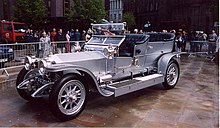Frank Tidswell
Frank Tidswell MB ChM (Syd) DPH (Camb) | |
|---|---|
| Born | Francis Tidswell 1867 Pathologist, Director of the Government Bureau of Microbiology |
| Known for | Snake venom research Bubonic plague research |
| Parent(s) | Fred and Mary Ann Tidswell The Hon. Richard Jones MLC (Father-in-law) |
Francis (Frank) Tidswell (1867 – 26 February 1941)
Birth and education







Tidswell was born in Sydney, the fifth of nine children born to Frederick Squire Tidswell (1831–1898) and his wife Mary Ann (1836–1912). The fourth child, Francis Thomas Tidswell (1864–1866) had died the year before his birth and the sixth child was the architect
Early medical career
Upon graduation, Tidswell occupied a position in the
Research
In 1898, Tidswell carried out extensive research on
Board of Health
Pathologist
With the creation of the Ministry of Health in 1913, Tidswell resigned and entered private practice.
Marriage and family life
In 1902, Tidswell married Edith Millie Jones, the third daughter of
References
- ^ "Obituary". The Scrutineer and Berrima District Press. NSW. 1 March 1941. p. 2. Retrieved 25 January 2014 – via National Library of Australia.
- ^ Fred Johns (1913). Annual Who's Who in Australia. Adelaide. p. 128.
{{cite book}}: CS1 maint: location missing publisher (link) - ^ New South Wales GovernmentDepartment of Health. Retrieved 20 May 2012.
- ^ a b Nesta Griffiths G (1947), Point Piper, past and Present (Syd:Ure Smith)
- ^ Encyclopedia of Australian Science and Innovation Retrieved 17 July 2023.
- ^ a b c "Frank Tidswell 1867–1941". Mundia. Retrieved 20 May 2012.
- ^ ISBN 0909134243.
- New South Wales GovernmentOffice of Heritage & Environment. Retrieved 21 May 2012.
- ^ Newington College Register of Past Students 1863–1998 (Syd, 1999) p. 198
- ^ "Alumni Sidneienses". University of Sydney. Retrieved 27 April 2017.
- ^ "IN THE PUBLIC EYE". The Sydney Stock and Station Journal. NSW. 13 July 1906. p. 6. Retrieved 25 January 2014 – via National Library of Australia.
- ^ The Newingtonian (Syd, March 1897) p. 252
- ^ "PRINCIPLE TEACHERS IN MEDICAL SUBJECTS BEFORE THE ESTABLISHMENT OF APPROPRIATE CHAIRS". University of Sydney. Retrieved 20 May 2012.
- ^ "SNAKE BITE SERUM WIDELY USED NOW". The Mercury. Hobart, Tasmania. 12 January 1945. p. 16. Retrieved 20 May 2012 – via National Library of Australia.
- ^ "BUBONIC PLAGUE COMES TO SYDNEY IN 1900". University of Sydney. Retrieved 20 May 2012.
- New South Wales GovernmentState Records. Retrieved 20 May 2012.
- ^ "FASHIONABLE WEDDING". The Australian Star. No. 4422. New South Wales. 19 April 1902. p. 11. Retrieved 28 April 2017 – via National Library of Australia.
- ^ Walking Coastal Sydney Retrieved 25 January 2014.
- ^ "Farnborough" (PDF). Newsletter of the Southern Highlands Branch Australian Garden History Society. Archived from the original (PDF) on 20 March 2012. Retrieved 22 May 2012.
- ^ "1912 Rolls-Royce Silver Ghost". Bonhams. Retrieved 20 May 2012.
